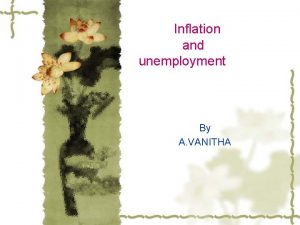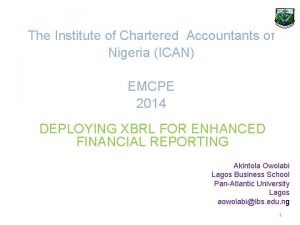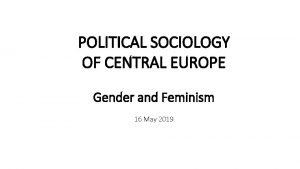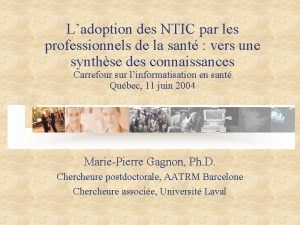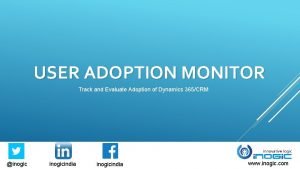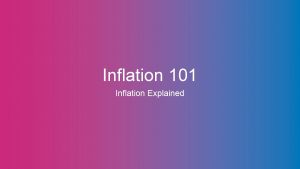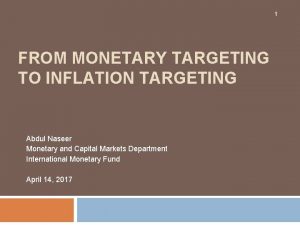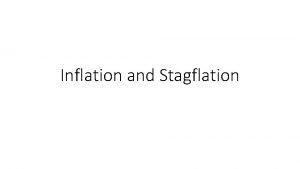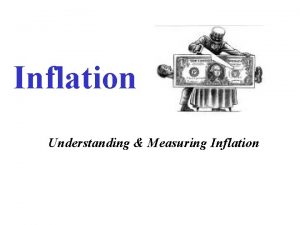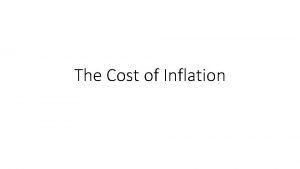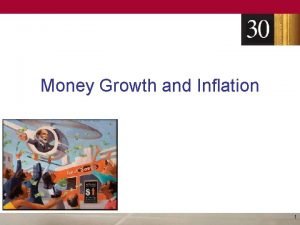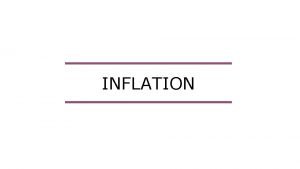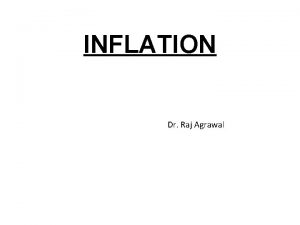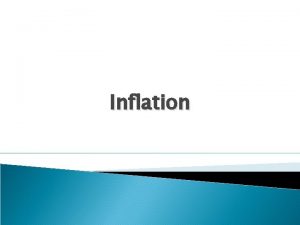Has the Adoption of Inflation Targeting Represented a
















- Slides: 16

Has the Adoption of Inflation Targeting Represented a Regime Switch? Empirical evidence from Canada, Sweden and the UK Jérôme Creel (ESCP Europe & OFCE/Sciences Po, Paris) Paul Hubert (OFCE/Sciences Po, Paris) OFCE WP 2008

What is Inflation Targeting? • Monetary Policy framework adopted by several central banks for a decade – Credibility – Accountability • Two main features: - Official focus on inflation - Communication of forecasts and increased transparency of policy actions • Provides Discipline (through commitment to target) & Flexibility (as target is generally a target range) – “Constrained discretion”

Motivation of the paper • Since 1990, a growing number of countries have adopted explicit inflation targeting (IT) around the world and many empirical assessments have been performed. • No clear consensus has emerged on the possible efficiency of this framework in curbing inflation and enhancing growth (potential) • Moreover, IT, through its role on anchoring expectations, is supposed to have an impact on macroeconomic environment. – Few assessments on expectations so far, except Levin, Natalucci, Piger (2004) & Gurkaynak, Levin, Swanson (2006) Two questions remain unanswered: – Has IT adoption represented a change in monetary policy strategy? – Has IT adoption provoked a change in macroeconomic environment?

Empirical Literature Empirical evidence has been mixed so far: In a world where inflation has declined substantially since the early 1980 s, it is rather difficult to detect the country-specific impact of IT on inflation outcomes. • • Johnson (2002) produced evidence of lower expected inflation in IT countries Levin et al. (2004) show that in comparison with non-IT countries, inflation targeters have been able to better anchor long-run inflation expectations and have experienced lower inflation persistence. Ball and Sheridan (2003) found no evidence of a beneficial impact of IT on economic performance in comparison with non-IT countries. Cecchetti et al. (2002) conclude that the extent to which IT exerts a measurable influence on monetary policy is limited, using SVAR Angeriz and Arestis (2007) do not find a significant break in the estimated evolution of inflation in the UK after the adoption of IT. Lin and Ye (2007) conclude that IT has had no significant effects, using propensity score matching to compare countries. Fregert and Jonung (2008) conclude that IT in Sweden has been “a success so far” due to evidence of a major change in wage setting since IT adoption.

Two questions lead to two different sections • First question: Has IT adoption represented a change in monetary policy strategy? – We test the hypothesis that IT has constituted a switch towards a greater focus on inflation – Two methods involved: MSVAR & TVP – Three countries studied: Canada, Sweden, UK • Second question: Has IT adoption provoked a change in macroeconomic environment? – One method involved: MSVAR – One country studied: Sweden

Method (1) • First method: Markov-Switching VAR – allows to respond to both questions • • • where yt= (y 1, t, . . . , yp, t) is an 1× n vector of endogenous variables, with n=3 the number of variables of interest, xt is an 1× np vector of p lagged endogenous variables, St is an unobserved state, β is an np× 1 vector of parameters, M=2 the number of states (or regimes). – allows to escape control group problem (most of the previous studies compared IT and non-IT countries during a stable period where inflation differences were insignificant): we study impact of IT over time.

Method (2) • Second method: Time-Varying Parameters – allows to respond to the first question only – the noise to variance ratio set equal to 0. 01 as in Young (1994)

Data • Set of variables: – Targeted inflation rate (core CPI for Canada and Sweden) – Output gap (or variation in the unemployment rate), – Central bank interest rate • Countries (date of IT adoption, date of completion): – Canada (Feb. 1991, Dec. 1995) – Sweden (Jan. 1993, Jan. 1995) – UK (Oct. 1992, May 1997) • Sample: – 1987 M 1 – 2007 M 12 – “Great moderation period”

1 st question: changes in coefficients – MSVAR (1) Canada Regime 1 Regime 2 No change of regime with the adoption of Inflation Targeting Predominant Regime 1 UK Regime 1 Regime 2 No change of regime with the adoption of Inflation Targeting but Regime 1 has strengthened recently Sweden Regime 1 Regime 2 Change of regime consecutive to the adoption of IT,

1 st question: changes in coefficients - MSVAR (2)

1 st question: changes in coefficients - TVP (1)

1 st question: changes in coefficients - TVP (2)

2 nd question: changes in macroeconomic environment Sweden Regime 1 Regime 2 Changes of regime of macroeconomic environment with the adoption of Inflation Targeting Regime 1 has lower intercept and variance, so uncertainty is reduced

Counterfactuals (Sweden)

Conclusions (1) • Has IT constituted a switch towards a greater focus on inflation? – MSVAR say: No in Sweden, UK, and Canada – TVP say: No in Sweden, No (depending on the horizon) in the UK, No in Canada • Has IT adoption provoked a change in macro-economic environment? – MSVAR say: Yes in Sweden

Conclusions (2) • At the policy level, contrary to conventional wisdom, IT has not constituted a regime switch where central bankers would have increased their focus on inflation • At the macroeconomic environment level, a switch towards reduced uncertainty appears for Sweden – The Riksbank has provided, through forecasts’ communication and a stable target, means for the public to anchor expectations – This framework tends to provide higher monetary policy leeway in Sweden – The sacrifice ratio of higher output volatility (generally attributed to inflation stabilization policies) is not modified under an IT regime in Sweden
 Types of unemployments
Types of unemployments Digital adoption platform insights
Digital adoption platform insights Open vs closed adoption
Open vs closed adoption Ohio child welfare training program
Ohio child welfare training program Outdoor recreation adoption model
Outdoor recreation adoption model User adoption portal
User adoption portal Corporate online booking
Corporate online booking Challenges of ifrs adoption in nigeria
Challenges of ifrs adoption in nigeria Estonia adoption
Estonia adoption Adoption
Adoption Dogs trust homefinding questionnaire
Dogs trust homefinding questionnaire Adoption flag
Adoption flag State of michigan adoption subsidy
State of michigan adoption subsidy Identical twin studies
Identical twin studies Adoption neo pi 44
Adoption neo pi 44 User adoption tracking
User adoption tracking Adoption in finland
Adoption in finland
